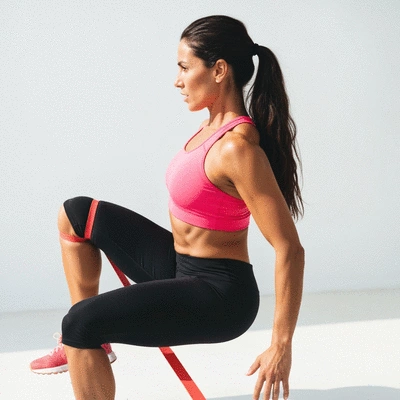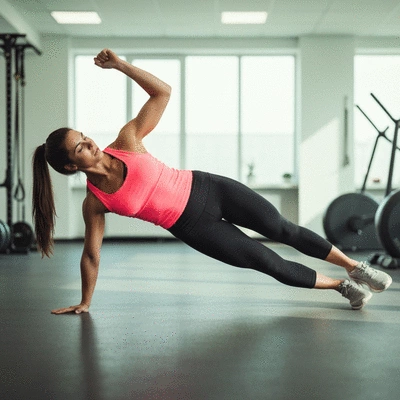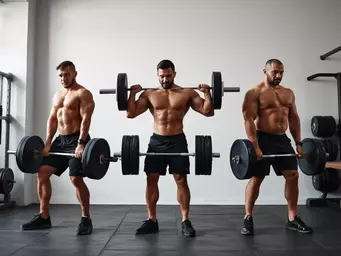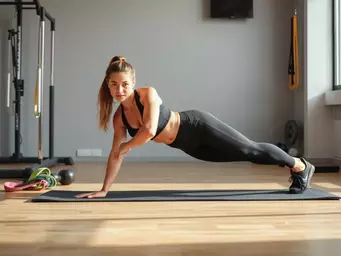Performance Enhancement
- • Power Generation
- • Improved Stride
- • Postural Support

Unlocking your running potential starts with a powerful core foundation. Incorporating glute strength into your routine doesn’t just enhance performance—it keeps you injury-free and boosts your overall efficiency. Are you ready to transform your runs?
Explore how strong glutes benefit runners across key areas: enhancing performance, preventing injuries, aiding recovery, and adapting to gender-specific needs.
As a fitness enthusiast and trainer, I can’t stress enough the importance of glute strength for runners! Many people overlook their glutes, but these muscles play a crucial role in running performance and overall health. Let’s dive into why having strong glutes is a game-changer for anyone hitting the pavement.
First, let’s talk about how glute strength enhances running performance. When your glutes are strong, they provide the power needed for propulsion, stability, and efficiency during your runs. With well-developed glutes, you’ll find that you can maintain better posture, improve your stride length, and ultimately run faster and longer. Isn’t that what we all aim for?
Running is an activity that relies heavily on the lower body, and your glutes are at the heart of it.
When these factors come together, you’ll notice improvements in not just your speed but also your endurance. It’s all about finding that balance and harnessing the full potential of your glutes!
Injuries can often derail your running journey, but having strong glutes can help you stay in the game. Many common running injuries stem from weak glutes, which can lead to improper mechanics and strain on other muscles. For instance, research published in PubMed Central highlights the critical role of gluteal muscle activation in preventing running-related injuries. If you want to keep injuries at bay, focusing on your glutes is essential.

By prioritizing glute strength, runners can create a solid foundation that protects against many injuries. Remember, prevention is key!
Another vital aspect of running performance is core stability, which is closely linked to your glutes. A strong core allows you to maintain proper form, especially during long runs. When your glutes are activated, they work hand-in-hand with your core muscles to support your running mechanics. The journal Frontiers in Physiology further elaborates on how core stability and glute activation are interconnected, emphasizing their combined effect on running efficiency.
Incorporating glute-strengthening exercises into your training regimen can yield significant benefits for your core stability. Trust me; you’ll feel the difference!
To truly maximize your glute strength, consider incorporating resistance bands into your workouts. These bands can enhance glute activation during exercises like squats and bridges, providing an extra challenge that leads to better results. Plus, they are portable and versatile—perfect for home workouts or on-the-go sessions!
Strong glutes are crucial for runners because they enhance performance by providing power for propulsion, improving stride efficiency, and offering postural support. They also play a vital role in injury prevention by stabilizing the hips and reducing strain on the knees and lower back.
Strong glutes stabilize the pelvis and hips, which helps reduce stress on the knees, preventing common issues like runner's knee. They also support the lower back and improve overall balance and coordination, making runners less susceptible to falls and overuse injuries.
Glutes and core muscles work together to provide stability, which is essential for maintaining proper running form and efficiency. A strong core, supported by activated glutes, improves balance, enhances endurance, and ensures more fluid and efficient movement during runs.
Effective recovery strategies include mobility exercises like hip flexor stretches, glute stretches, and dynamic leg swings. Foam rolling is also highly recommended to release tension and improve blood flow. Additionally, proper warm-ups and cool-downs are vital for maintaining glute health and function.
Yes, female runners, in particular, may have unique pelvic stability needs due to anatomical differences like wider hips. Customizing glute exercises to focus on abductor strengthening and hip mobility can help prevent injuries and optimize running mechanics for female athletes.
As a runner, we often focus on improving performance and building strength, but equally important is how we recover and maintain our glute function. Integrating effective recovery strategies can significantly enhance your glutes and boost your overall running efficiency. Let’s dive into the essential practices that can help your glutes recover and stay strong!
Mobility exercises and stretching are crucial for runners who want to keep their glutes functioning at their best. Incorporating these into your routine can improve flexibility and prevent tightness, which often leads to injury. Here are some effective mobility exercises to consider:
Don’t skip these exercises—your glutes will thank you! Regularly practicing these techniques can help you maintain flexibility and improve your running form.
Foam rolling is often underrated but plays a vital role in recovery and muscle maintenance. By applying pressure to your muscles, foam rolling can help release tension and improve blood flow, which is crucial for recovery. For glute recovery, here’s how you can do it:
Trust me—this will not only help in recovery but also enhance your performance by preparing your glutes for the next run!
Never underestimate the power of a warm-up and cool down! Warming up properly gets your blood flowing to the glutes and prepares your body for action, while cooling down helps in recovery. Here are some critical aspects to keep in mind:
By prioritizing these practices, you can ensure your glutes remain healthy, strong, and ready for every run!
When it comes to glute training, understanding gender-specific needs is vital. Female runners, in particular, may have unique pelvic stability requirements that can affect their performance. Let’s explore how we can customize glute exercises to cater to these needs.
Pelvic stability is crucial for all runners, but it holds particular importance for female athletes due to anatomical differences. Women tend to have wider hips, which can affect knee alignment and stability during running. Research published in PMC highlights the biomechanical differences in female runners, suggesting targeted glute training for enhanced pelvic stability. Here’s how we can enhance pelvic stability for female runners:

By strengthening the glutes and surrounding muscles, female runners can prevent injuries and improve their running mechanics.
It's essential to tailor glute exercises to maximize performance across genders. While many exercises are beneficial for everyone, consider these adjustments:
By customizing your approach, you can enhance your training outcomes and boost performance effectively!
Overuse injuries are common among runners, often stemming from inadequate glute strength or training errors. It’s vital to recognize these injuries early. Common issues include:
Preventing these injuries involves a balanced approach to strength training and ensuring glutes are properly activated during all activities.
Here is a quick recap of the important points discussed in the article:
Glute-Focused Deadlift Variations Explained

Consider this: strong glutes not only enhance your physique but also play a pivotal role in your ove
Boost Your Glute Activation Today

What if I told you that engaging your glutes can significantly enhance your athletic performance and
Dumbbell Moves for Stronger Glutes

Are you ready to strengthen your glutes and boost your confidence? Dive into the world of effective
Glute-Focused Deadlift Variations Explained
Boost Your Glute Activation Today
Dumbbell Moves for Stronger Glutes
Hip Thrusts or Squats: Choose Wisely
Glute Activation Moves Before Workouts